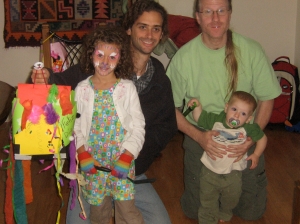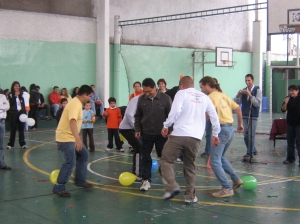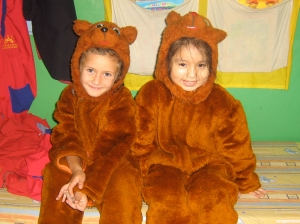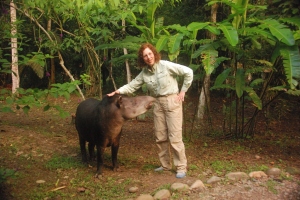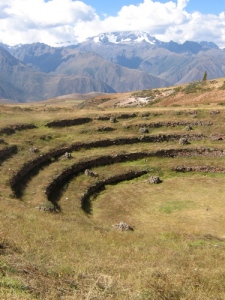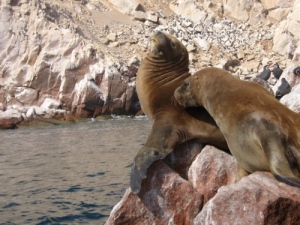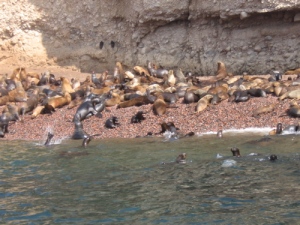We just got back from 4 days in Cajamarca, which is in the North Central Peruvian Andes. It was a great trip, in most ways. We decided to stay outside of the center of town at a hacienda that had a beautiful setting, horses, a playground, fireplaces in all of the rooms, etc. It really was beautiful. You can see some of the grounds below.
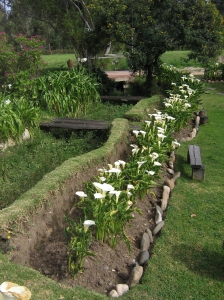
We all rode horses. Sid´s was a little pony, led by one of the men who works there, but Bob and I actually rode our own horses, who wanted to trot and had no interest in staying near the pony. It was fun, but definitely a bit trying, because Bob´s not sure if he had ever ridden a horse before, and I can remember one other time since I was about 8!
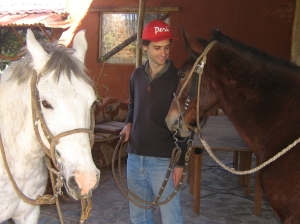
The real adventure started at night though. It was about 7:30, and Sid and I were playing on one of the beds in our room, near the beautiful fire we had blazing in the fireplace. All of a sudden, I noticed the spider below on the wall. Now, that picture doesn´t do it justice (because I was too afraid to get close for a photo, and Sid was sobbing in Bob´s arms). It was about as big as a fist, very round and furry. I went to ask the guy who gave us the firewood if there are poisonous spiders in Cajamarca. He said yes, he´d be right there. He then confirmed that it was poisonous, squished it with a paper towel, and left. So, we tried to not make too big of a deal of it. Sid was too scared to even change into PJs or go to the bathroom, so we just put her in the bed away from the spider and sat with her while she fell asleep.
About an hour later, I saw another one. I went to get the guy again, and this time asked him to level with me. What do you do if one of these bites? His response, ¨go right to the hospital.¨ He then said they were dangerous. So we started looking around the room with a flashlight and found about 5 more small ones under the edge of the rug. Finally I said, ¨I´m really scared, but I don´t want to be crazy about this. If this were your daughter, what would you do?¨ And without blinking an eye, he said that he would change rooms. So we did. Within minutes, however, I was sure that we were changing rooms in the morning into something more urban in town.
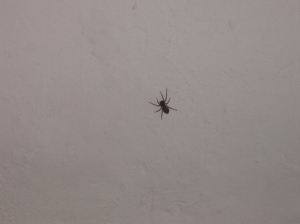
The best day trip we did from Cajamarca was to a site called Cumbe Mayo, below. It was a series of gorgeous rock formations, rock tunnels, and 3,000 year old pre-Incan aqueducts. We hiked around with a guide for about two hours, and got to squeeze through a pitch black, two foot diameter rock tunnel. Sid liked it so much that she went through twice!
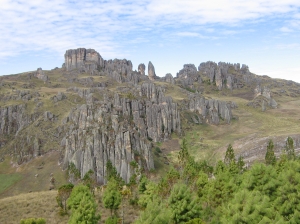

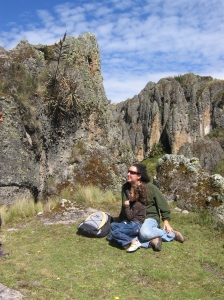

Anyhow, there are more photos that I don´t have yet, so perhaps I´ll update soon. We´re waiting now for Kathleen, Lee, and Carter to get in tomorrow night!



